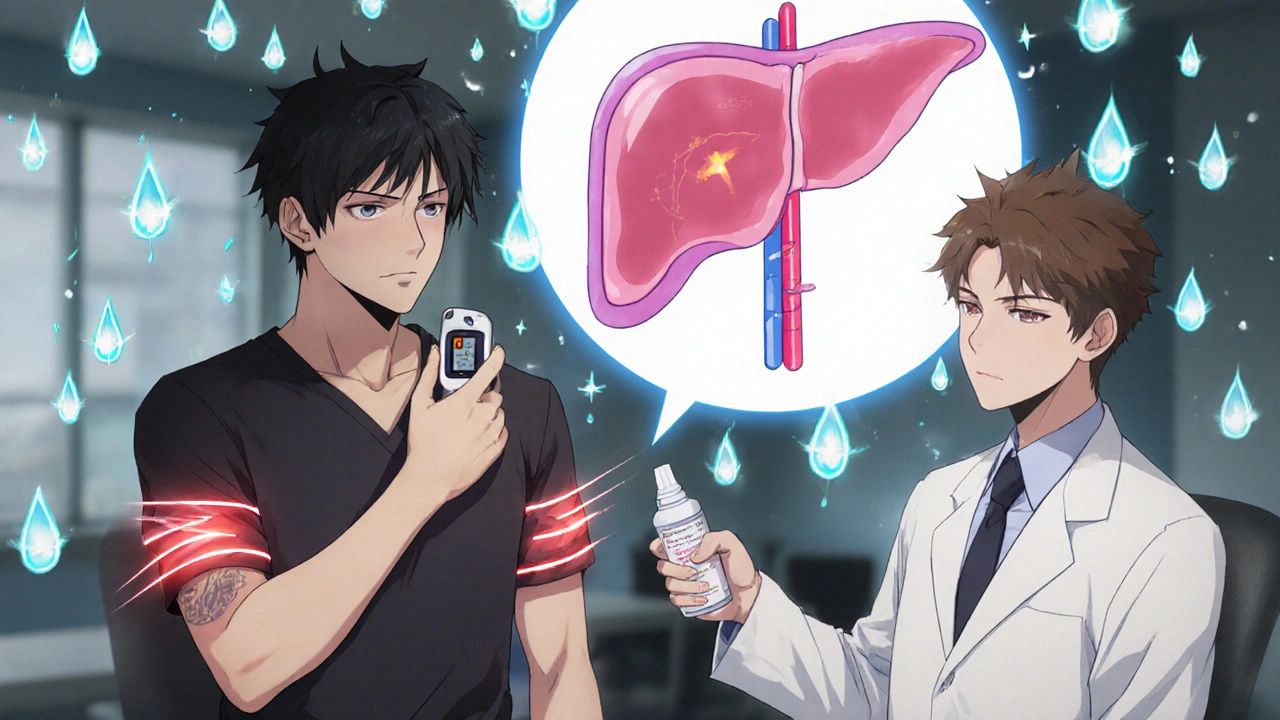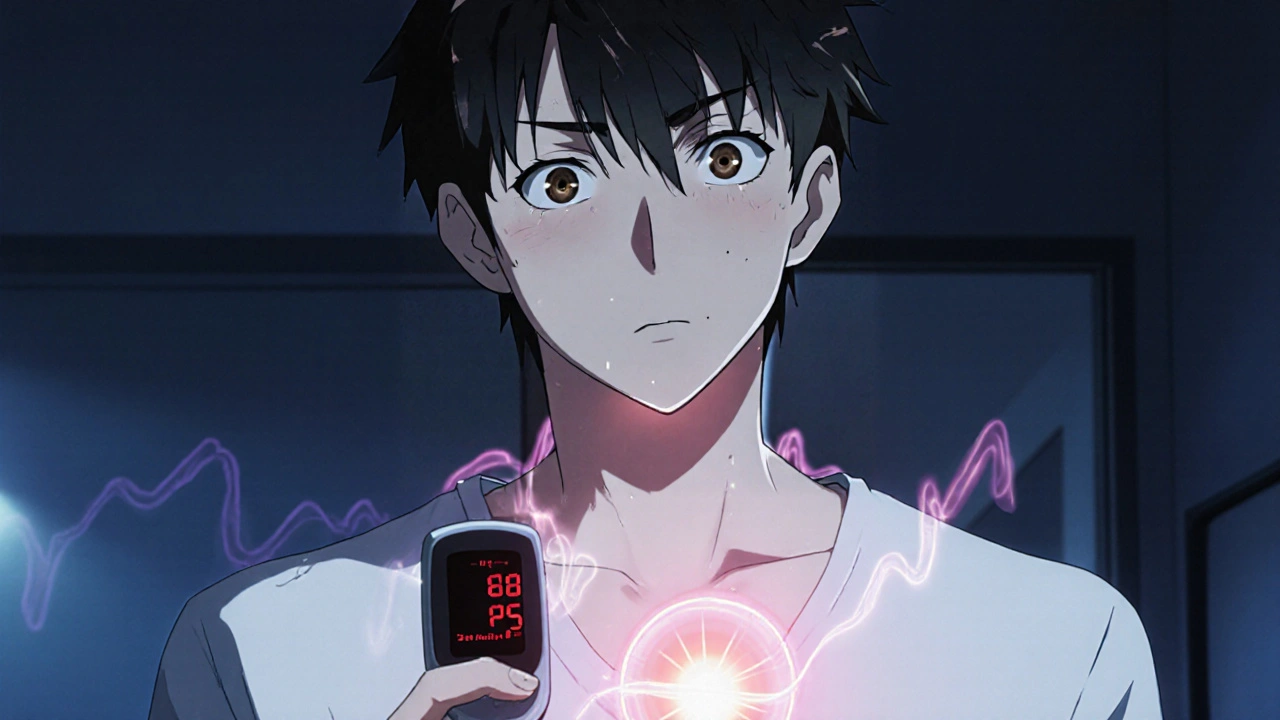Why Insulin and Beta-Blockers Can Be a Dangerous Mix
If you’re taking insulin for diabetes and also a beta-blocker for high blood pressure or heart disease, you’re at higher risk for a silent, life-threatening problem: hypoglycemia unawareness. This isn’t just a side effect-it’s a dangerous blind spot in your body’s warning system. While insulin lowers your blood sugar, beta-blockers can hide the signs that it’s dropped too low. You might not feel your heart racing, your hands shaking, or your skin going cold. And without those signals, your blood sugar can crash without warning-leading to confusion, seizures, coma, or even death.
This isn’t rare. About 40% of people with type 1 diabetes develop hypoglycemia unawareness over time. When you add beta-blockers into the mix, the risk jumps even higher. Hospitals see this combination all the time: roughly 25% of diabetic patients on insulin are also prescribed beta-blockers. The problem? Many patients-and even some doctors-don’t realize how quietly this danger builds.
How Beta-Blockers Mask the Warning Signs
Your body has a built-in alarm system for low blood sugar. When glucose drops, your nervous system releases adrenaline. That’s what causes the classic symptoms: trembling, fast heartbeat, sweating, anxiety, and hunger. These are your body’s way of saying, “Eat something now.”
Beta-blockers interfere with that alarm. They block adrenaline’s effects on your heart and muscles. So your heart doesn’t race. Your hands don’t shake. You might not feel the panic that normally tells you something’s wrong.
But here’s the key detail most people miss: you still sweat. Sweating is controlled by a different pathway-acetylcholine, not adrenaline. That means if you’re on a beta-blocker and start sweating for no reason, it’s not a hot flash or stress. It’s your body’s last, best warning sign. If you learn to recognize that, you can still catch low blood sugar in time.
Not All Beta-Blockers Are the Same
There’s a big difference between types of beta-blockers. Some are “selective”-they mainly target the heart. Others are “non-selective,” affecting the heart, lungs, liver, and pancreas. And that difference changes your risk.
- Non-selective beta-blockers (like propranolol) block more receptors. They’re more likely to hide all warning signs of low blood sugar. Avoid these if you have diabetes and a history of hypoglycemia.
- Selective beta-blockers (like metoprolol or atenolol) are safer-but still risky. Studies show they increase the odds of hypoglycemia by 2.3 times in hospitalized patients.
- Carvedilol stands out. It’s not just selective-it has extra properties that help your body handle low blood sugar better. Research shows it causes less hypoglycemia than metoprolol. In fact, one study found a 17% drop in severe low blood sugar events when patients switched from metoprolol to carvedilol.
That’s why guidelines now recommend carvedilol as the first choice for diabetic patients who need a beta-blocker. It’s not perfect, but it’s the safest option we have right now.

It’s Not Just About Symptoms-Your Body Can’t Fix Low Blood Sugar Either
The danger doesn’t stop at masked symptoms. Beta-blockers also interfere with your body’s ability to recover from low blood sugar.
When your glucose drops, your liver should release stored sugar to bring it back up. That’s called glycogenolysis. Beta-blockers, especially those that block β2 receptors, shut that process down. At the same time, they can reduce insulin clearance and blunt glucagon release-your body’s other tools for raising blood sugar.
So you’re stuck: your warning signs are gone, and your body can’t fix the problem. This is why hypoglycemia on beta-blockers isn’t just uncomfortable-it’s more likely to become severe, prolonged, and deadly. One study found that patients on selective beta-blockers had a 28% higher risk of dying from low blood sugar compared to those not taking them.
Who’s at Highest Risk?
This isn’t a problem for everyone. Certain people are far more vulnerable:
- People with type 1 diabetes (40% have hypoglycemia unawareness)
- Those who’ve had multiple low blood sugar episodes in the past
- Patients with kidney disease (slows insulin clearance)
- Older adults (reduced hormone response)
- Anyone starting or adjusting insulin doses
- Patients newly prescribed beta-blockers-the first 24 hours in the hospital are the riskiest
And here’s something surprising: even if you have type 2 diabetes and aren’t on insulin, beta-blockers still raise your risk of low blood sugar-especially if you’re taking sulfonylureas or meglitinides. The risk is lower than in type 1, but it’s still real.
What You Should Do: Practical Safety Steps
You don’t have to give up your heart medication. But you do need to take action.
- Ask your doctor: Can I switch to carvedilol? If you’re on propranolol or metoprolol and have had low blood sugar episodes, ask if carvedilol is an option.
- Check your blood sugar more often. If you’re in the hospital, get checked every 2-4 hours. At home, check before meals, at bedtime, and anytime you feel off-even if you think it’s just stress.
- Learn to recognize sweating as your main warning. If you break out in sweat without being hot or anxious, test your blood sugar. Don’t wait for shaking or a racing heart.
- Use continuous glucose monitoring (CGM). CGM alerts you when your sugar drops-even if you don’t feel it. Since 2018, use of CGM in this group has jumped 300%, and severe events have dropped by 42%.
- Carry fast-acting sugar everywhere. Glucose tablets, juice boxes, or candy. Keep them in your car, purse, and bedside table.
- Tell family and coworkers. Teach them what to do if you become confused or unconscious. Glucagon kits are now available as nasal sprays-easy to use, even for non-medical people.

What About Long-Term Risk?
Some studies suggest the danger might be worse in hospitals than at home. One large trial (ADVANCE, 2010) found no difference in severe hypoglycemia over five years between patients on atenolol and those on placebo. That’s reassuring for stable, outpatient care.
But hospital stays are different. Stress, changing meals, IV insulin, and delayed meals create perfect conditions for a crash. And that’s where most dangerous events happen-within the first day of starting a beta-blocker.
So if you’re going into the hospital, tell your care team you’re on insulin and a beta-blocker. Ask for glucose checks every 2-4 hours. Don’t assume they’ll know.
The Bigger Picture: Why This Matters
Beta-blockers save lives. After a heart attack, they cut death risk by 25%. For people with heart failure or high blood pressure, they’re essential. But for people with diabetes, they come with a hidden cost.
The goal isn’t to avoid beta-blockers-it’s to use them smarter. Choose the safest type. Monitor closely. Educate yourself. Use technology. And never ignore sweating.
Thousands of people live safely with both insulin and beta-blockers. They just know the rules. You can too.
What’s Next? New Tools on the Horizon
Research is moving fast. The 2023 DIAMOND trial is testing genetic markers that predict who’s most likely to develop hypoglycemia unawareness on beta-blockers. In the future, doctors might test your DNA before prescribing-and pick the safest drug for your body.
Other ideas are being tested too: drugs that boost hypoglycemia awareness, like methylxanthines (found in caffeine) or alanine supplements. Opioid blockers have shown promise in early studies, too.
But for now, the best tools are the ones you already have: awareness, monitoring, and the right medication choice.
